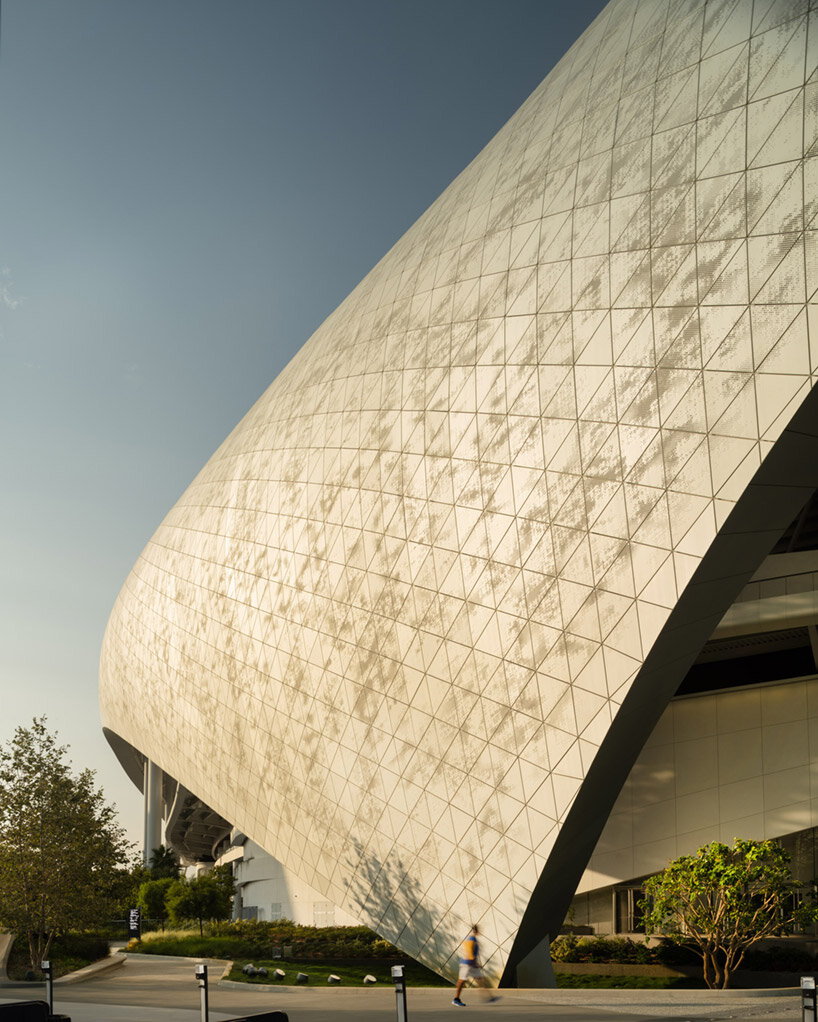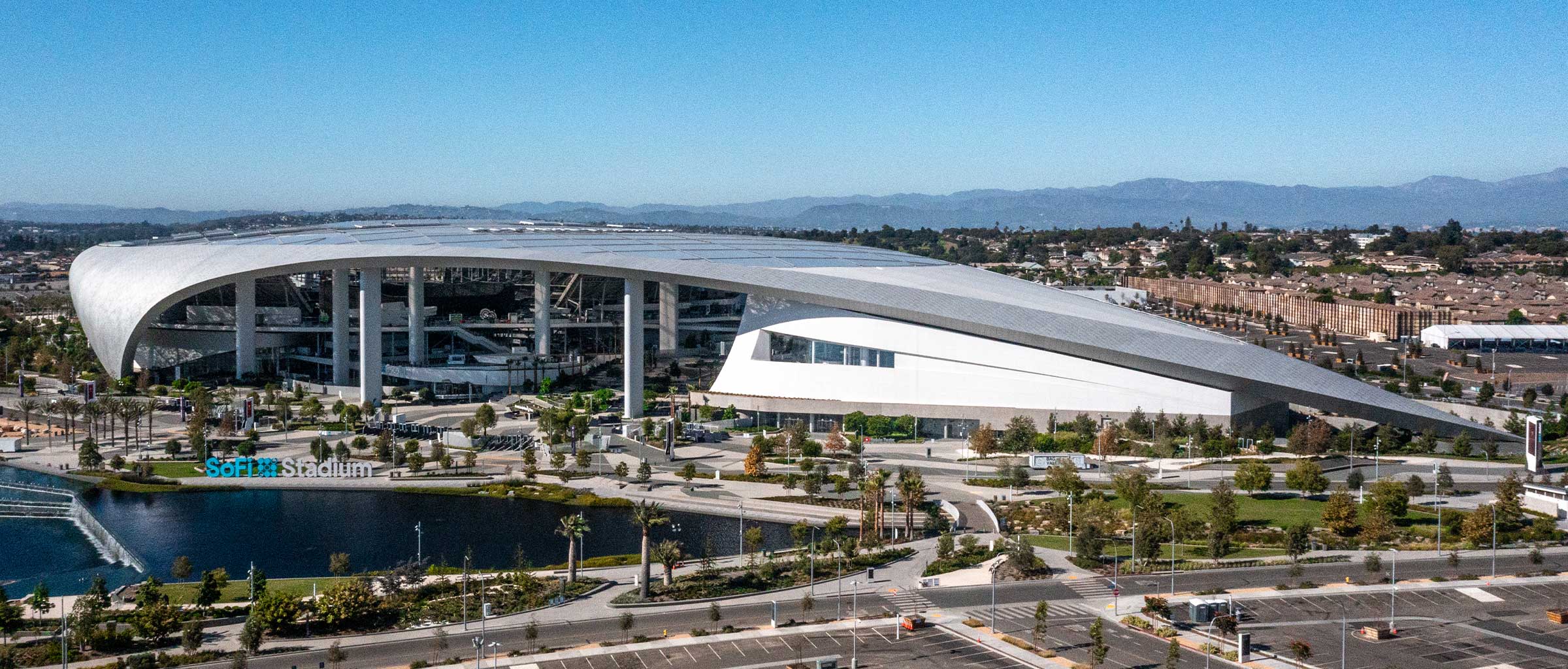SoFi Stadium, located in Inglewood, California, is not just an architectural feat; it is a testament to the seamless integration of cutting-edge design and innovative technology. Opened in September 2020, this multi-purpose venue serves as the home for the Los Angeles Rams and the Los Angeles Chargers of the National Football League (NFL), as well as hosting a variety of events from concerts to the Super Bowl. The stadium’s design has drawn worldwide attention, not only for its aesthetics but also for its functionality and sustainability. This article delves into the unique architectural features, innovative technologies, and the overall impact SoFi Stadium has made in the realm of modern sports architecture.
Architectural Design: A New Era of Stadiums

The design of SoFi Stadium is a collaborative effort led by the architecture firm HKS, which has previously worked on notable projects like the Dallas Cowboys’ AT&T Stadium. The stadium is characterized by several distinctive features:
- Unique Roof Structure: The stadium boasts a striking, translucent ETFE (ethylene tetrafluoroethylene) roof that resembles a sweeping wave. This roof not only provides natural light but also enhances the acoustics within the venue.
- Open-Air Concept: Unlike many stadiums with closed structures, SoFi Stadium features an open-air design that allows for a natural flow of air and a connection with the surrounding environment.
- Seating Capacity and Configuration: With a capacity of approximately 70,000, expandable to 100,000 for special events, the seating arrangement is designed to provide optimal sightlines for every spectator.
This innovative design has set a new standard for stadium architecture, emphasizing both form and function. The stadium’s aesthetic appeal is matched by its practical features, making it a versatile venue for a myriad of events.
Technological Innovations: A Digital Playground
.jpg)
In addition to its architectural beauty, SoFi Stadium is a hub of technological innovation. The integration of advanced technology enhances the fan experience, making it one of the most sophisticated stadiums in the world.
- High-Definition Video Boards: The stadium features the largest videoboard in the world, which spans 70,000 square feet. This massive screen is an integral part of the in-game experience, providing fans with close-up replays and real-time statistics.
- State-of-the-Art Sound System: The sound system is designed to deliver crystal-clear audio throughout the venue, ensuring that fans can enjoy every moment of the action, regardless of their location.
- Wi-Fi Connectivity: SoFi Stadium offers robust Wi-Fi access, allowing fans to stay connected and share their experiences in real-time without interruption.
These technological advancements contribute to an enriched experience for both attendees and event organizers, making SoFi Stadium a model for future sports venues worldwide.
Sustainability: Building for the Future
As climate change continues to be a pressing global issue, sustainability has become a crucial consideration in modern architecture. SoFi Stadium has taken significant steps to ensure environmental responsibility:
- Water Conservation: The stadium incorporates advanced water management systems that significantly reduce water usage. Rainwater is collected and reused for irrigation and non-potable applications.
- Energy Efficiency: The design prioritizes natural light, reducing the need for artificial lighting during daytime events. Additionally, energy-efficient systems help minimize overall energy consumption.
- LEED Certification: SoFi Stadium is striving for LEED (Leadership in Energy and Environmental Design) certification, which recognizes sustainable building practices.
By integrating sustainable practices into its design and operation, SoFi Stadium sets a precedent for future sports facilities, demonstrating that innovation and environmental responsibility can go hand in hand.
Economic Impact: Revitalizing the Community
The construction and operation of SoFi Stadium have had a significant economic impact on the local community and the greater Los Angeles area. According to various reports:
- Job Creation: The project created thousands of jobs during the construction phase and continues to provide employment opportunities in venue operations and event management.
- Tourism Boost: As a premier destination for major events, including the Super Bowl and concerts, SoFi Stadium is expected to attract millions of visitors annually, boosting local tourism and hospitality sectors.
- Local Business Support: The influx of visitors supports local businesses, from restaurants to hotels, contributing to the overall economic growth of Inglewood and its surrounding areas.
The stadium’s design and operational strategies emphasize community engagement and economic revitalization, showcasing how sports infrastructure can benefit local populations.
Case Studies: Events that Shaped SoFi Stadium’s Identity

SoFi Stadium has already hosted a variety of high-profile events that have contributed to its identity as a premier venue. Some notable examples include:
- Super Bowl LVI (2022): The stadium made its mark on the world stage by hosting the Super Bowl, showcasing its capabilities to handle large-scale events with impressive production value.
- Concerts by Major Artists: SoFi Stadium has hosted performances by top-tier artists, including Taylor Swift and The Rolling Stones, further establishing its reputation as a versatile venue.
- College Football Playoff National Championship (2023): The stadium’s design and technology were put to the test as it hosted this prestigious college football event, drawing in fans from across the nation.
These events not only highlight the stadium’s capabilities but also its role in shaping the cultural landscape of the region.
Conclusion: The Future of Stadium Architecture

SoFi Stadium stands as a remarkable example of how modern architecture can combine aesthetics, functionality, and sustainability. Its innovative design and technological advancements enhance the fan experience while promoting environmental responsibility. The economic impact on the local community further emphasizes the role of sports architecture in revitalizing urban spaces.
As we look to the future, the lessons learned from SoFi Stadium will undoubtedly influence the design of sports venues around the world. By prioritizing sustainability, community engagement, and technological innovation, SoFi Stadium not only sets a new benchmark for architectural excellence but also paves the way for a more responsible and exciting future in sports architecture.